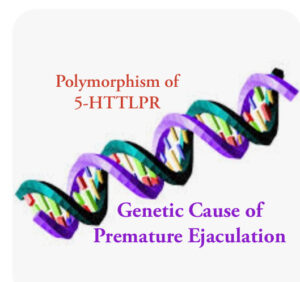Causes of Premature Ejaculation
The exact cause of PE is not known, but there are many reasons why a man may have PE. PE can be caused by a number of factors, including: Biological factors, such as inflammation of the prostate gland or a spinal cord problem. Chemical factors, such as abnormal hormone levels. Emotional factors, such as anxiety, stress, or relationship problems. Genetic factors related to the molecules that signal between nerves. Serotonin is a natural substance in your body made by nerves. It helps to control the way the brain manages mood, emotion, sleep and sexual desire. High amounts of serotonin in the brain increase the time to ejaculation. Low amounts can shorten the time to ejaculation, and lead to PE. Below are some more specific causes of Premature Ejaculation
.
Psychogenic Factors
Psychological, or mental health, issues can be involved with PE and may include:
- Depression
- Anxiety
- Stress
- Guilt
- Unrealistic expectations about sex.
- High Arousability.
- Lack of confidence.
- Early sexual experience: doing sexual activities in hurry in fear of being caught.
- Lack of awareness of techniques effective in ejaculatory control.
- Frequency of sexual activity: less frequent sexual behavior.
- History of sexual repression (blocked sexual feelings).
- Relationship problems.
- Deep seated hatredness, personality disorders.


Biogenic Factors
- Endocrinological causes:- Diabetes, Hyperthyroidism.
- Penile sensitivity:- Hypersensitivity i.e. raised sensation of penis.
- Urological conditions:- Prostatitis.
- Chronic renal insufficiency.
- Neurological diseases:- Multiple Sclerosis, peripheral neuropathies.
- Sexual disorders:- Erectile Dysfunction: Compensatory effort to achieve ejaculation before the loss of the erection and Loss of Libido.
- Varicocele.
- Low vitamin B12 levels.
- Low seminal magnesium levels.
- Increased serum leptin levels.
- Drug induced:- Amphetamine, cocaine, and dopaminergic drugs.
Genetic Factors
- Polymorphisms of the 5-HTTLPR gene:- Polymorphisms of the serotonin transporter promoter region gene, of chromosome 17, which encodes the serotonin-transporter-linked promoter region (5-HTTLPR) have been investigated in many studies exploring the genetic basis of PE. The 5-HTTLPR gene has two variant alleles: a short (S) and a long (L) allele. 5-HTTLPR is associated with lifelong PE and L alleles might protect the male against lifelong PE.
- 5-hydroxytryptamine receptor dysfunction:- 5-HT2C receptor hyposensitivity and/or 5-HT1A receptor hypersensitivity.

Diagnosis Of Premature Ejaculation
An accurate clinical history is the best diagnostic method, and in the majority of the cases it is enough to differentiate between primary and acquired premature ejaculation. Clinical history plays an important part in the diagnosis of PE since it is by definition a self-reported diagnosis. However, clinical assessment can be challenging owing to the nature of the problem. Patients may be embarrassed and shy when relating details of their sexual experiences and exact details are not forthcoming.Once a diagnosis of PE is established, other related things that should be explored are:
- The nature of the PE (lifelong or acquired);
- The presence or absence of any associated erectile dysfunction (ED);
- The impact of the PE on the relationship with his partner;
- The impact of the PE on quality of life;
- Previous Treatment (including over the counter medication) and response to that treatment.

Questionnaires
For this purpose Questionnaires such as the Index of Premature Ejaculation i.e. IPE, the Premature Ejaculation Diagnostic Tool i.e. PEDT, Premature Ejaculation Profile i.e. PEP, Arabic Index of Premature Ejaculation i.e. AIPE, Chinese Index of Premature Ejaculation i.e. CIPE can be used. Premature ejaculation diagnostic tool (PEDT) is consisted of five questions. This is a questionnaire to help identify men who may have a problem with ejaculating too soon during sexual activity. Even if you do not have difficulties, please answer all the questions.
A score of < 8 equals No PE, A score of 9 or 10 means Probable PE, and A score of > 11 indicates PE.
Physical Examination and Tests
Examination:- Physical examination is usually normal in patients with Primary PE. Patients with Secondary PE, may have an altered physical exam that suggest presence of anatomical anomalies and disorders. Examination of the patient involves a general examination as well as a more focused examination of the genitalia, outlining the scrotal contents and the penis in detail. A digital rectal examination to palpate the prostate gland is also recommended. Clinical examination can identify anatomical anomalies, disorders and risk factors that may favor PE.
Shortness of the frenulum, pathology of the Prepuce (Phimosis) or Glans (Balanitis);
Other anatomical anomalies of the urogenital system;
Examination of the perineum and Prostate (Prostatitis);
Search for signs of Dysthyroidism.
Laboratory Tests:- Indication of Laboratory and other physiological tests are rare. History and examination are sufficient to reach a diagnosis. Still advise is to perform, blood count, lipid profile, glycosylated haemoglobin, urinalysis, testosterone (free and total), prolactin and thyroid stimulating hormone (TSH).

 Dr. SP Singh Clinic[/caption]
Dr. SP Singh Clinic[/caption]